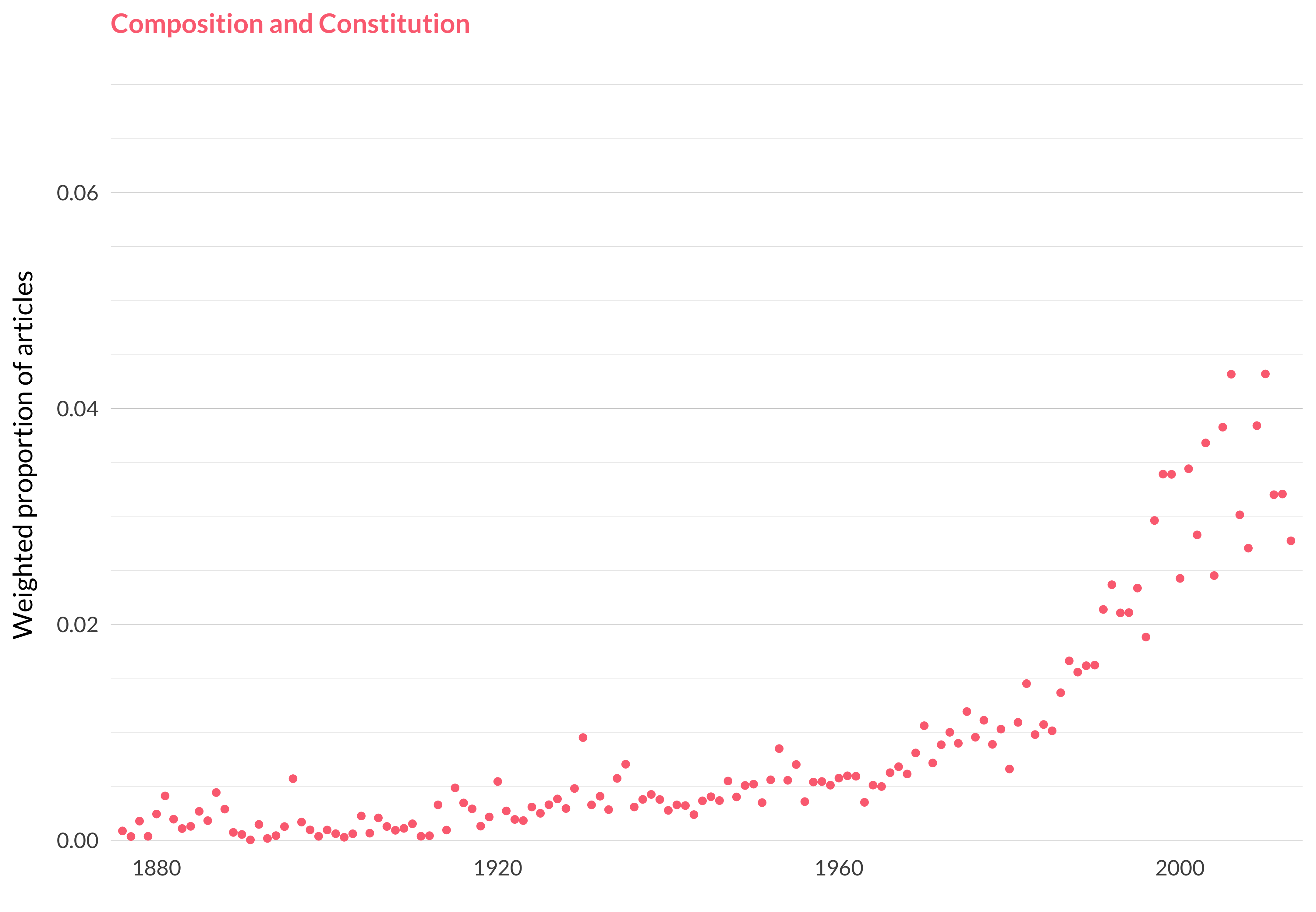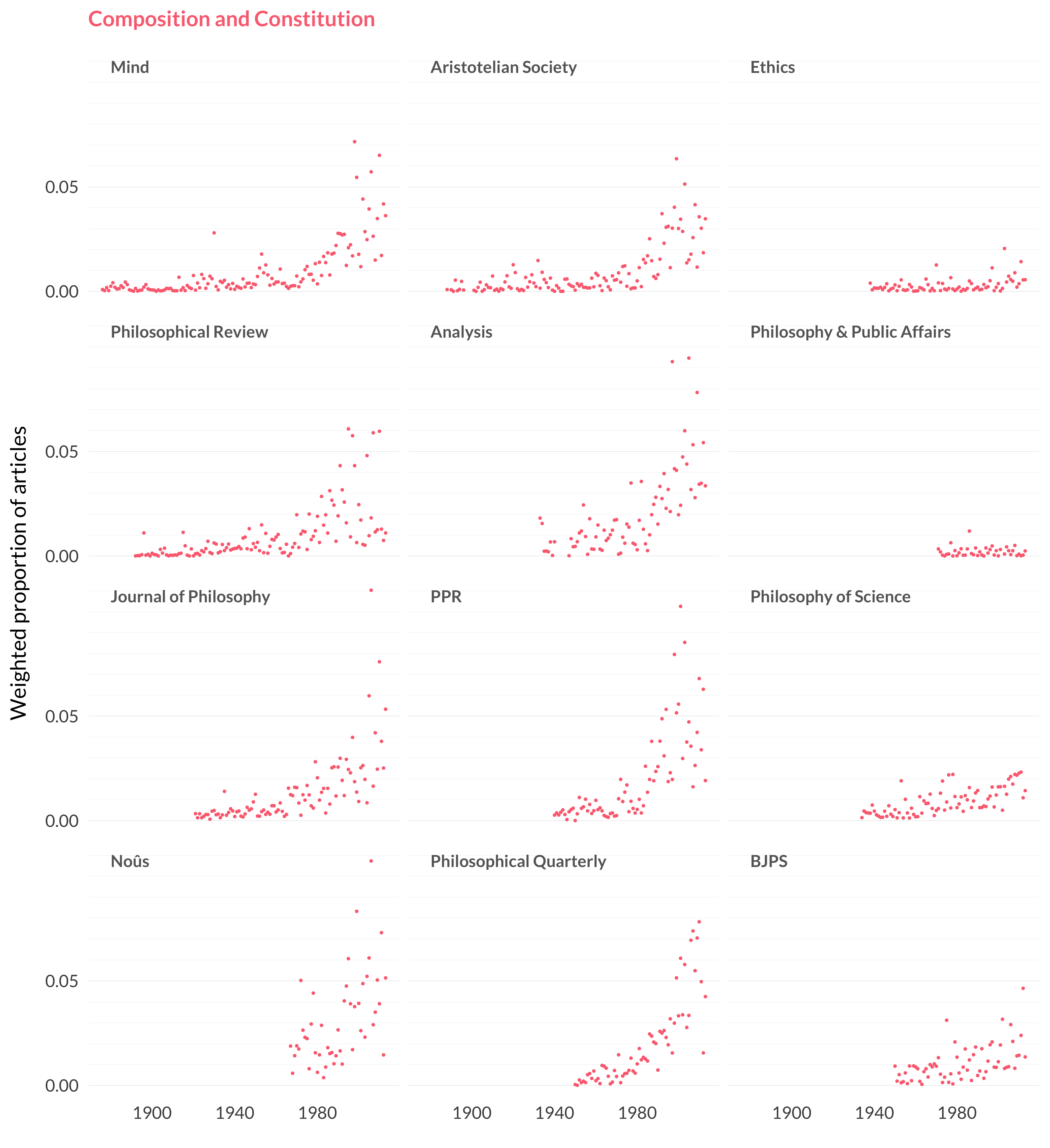2.89 Composition and Constitution
Category: Metaphysics
Keywords: supervenience, properties, property, composition, extrinsic, statue, relational, kim, prop, armstrong, composed, intrinsic, parts, disjunctive, micro
Number of Articles: 421
Percentage of Total: 1.3%
Rank: 22nd
Weighted Number of Articles: 440.8
Percentage of Total: 1.4%
Rank: 18th
Mean Publication Year: 1997.9
Weighted Mean Publication Year: 1990.8
Median Publication Year: 2002
Modal Publication Year: 2010
Topic with Most Overlap: Modality (0.0451)
Topic this Overlaps Most With: Modality (0.0464)
Topic with Least Overlap: Crime and Punishment (0.00016)
Topic this Overlaps Least With: Game Theory (0.00064)

Figure 2.204: Composition and constitution.

Figure 2.205: Composition and constitution articles in each journal.
Comments
This is the central topic of late twentieth- and early twenty-first-century metaphysics, and unsurprisingly it has a huge number of highly cited articles. Eventually the interest in composition and constitution turned meta, and subsequent work often focussed on what was at stake in debates about composition and constitution, and then about whether there was a more general notion of grounding that could subsume these concepts and, perhaps, several others.
Some of the work here could plausibly be counted in philosophy of mind, since some of the papers are about the relationship between mind and body. This is in keeping with a common trend in late twentieth/early twenty-first-century philosophy—when there is work that crosses between the big disciplines in philosophy, it usually involves philosophy of mind. That stops in the 2010s; more work crosses between disciplines other than philosophy of mind. But for a while philosophy of mind is the glue that holds the other subjects together. Deontology and mereology don’t have much in common, but deontology is linked to moral psychology, and mereology to the mind-body problem, and so they are connected via philosophy of mind.